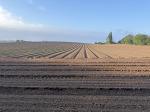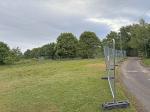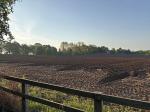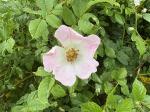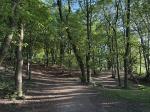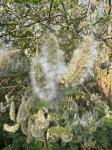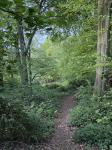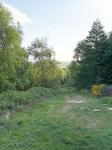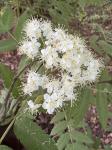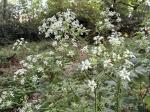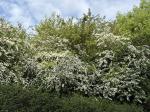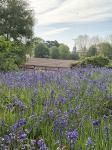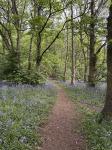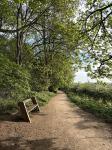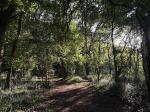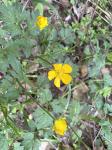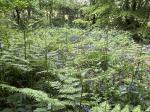Brayton Barff Through the Seasons.
Set in the Vale of York, South West of the market town of Selby and between the villages of Thorpe Willoughby and Brayton, lies Brayton Barff, a sandstone Hill approximately one hundred and fifty feet in height which was formed by glacial movement during the last Ice Age. It is a significant landmark in an otherwise flat landscape.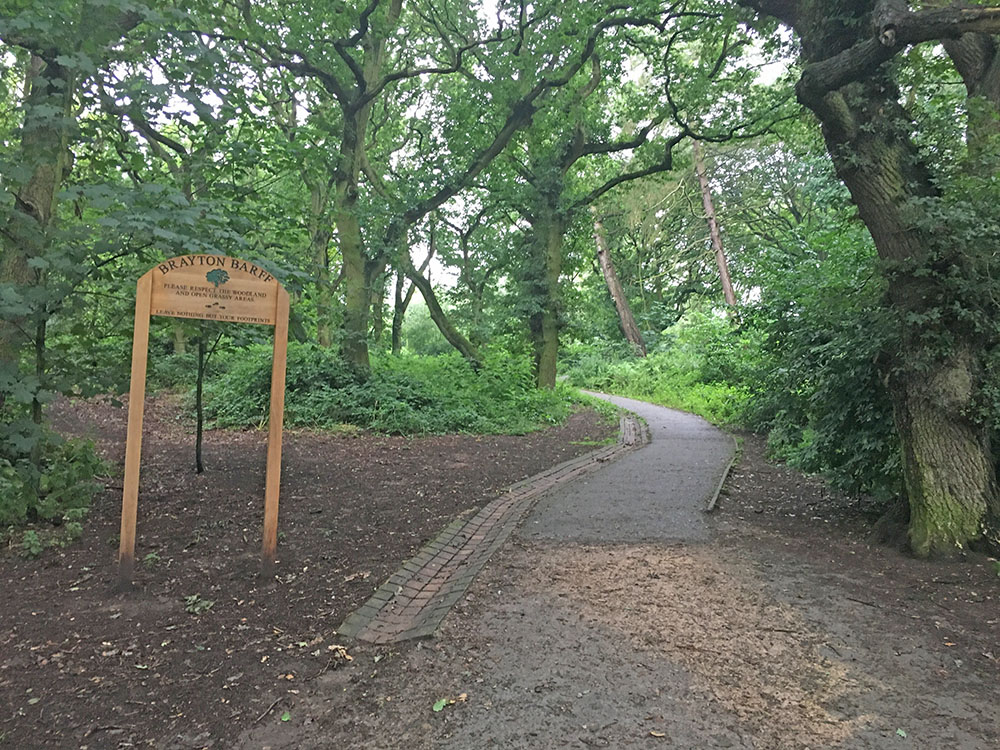
Today the site is primarily owned by Yorkshire Water with Selby District Council owning a small patch of the land adjacent to the A63 Selby bypass. A large underground reservoir occupies the centre of the site which delivers water to around 4.7 million customers throughout Yorkshire.
Within the Barff woodland over 40% of the trees are Sessile Oak which are generally found in semi natural woodlands in the north of the country. These trees are so called because its acorns are not held on stalks, like those of the English Oak (Pedunculate), but attached directly to the outer twigs. There are also several English Oak trees as well as some cross-hybrid oaks. These trees are known to support many species of flora and fauna, invertebrates, mosses, lichen and fungi.
During the Victorian times it is thought that the shipbuilders on the east coast would come over to the Barff for selected cuts of timber to build their sea going vessels.
The Barff also has a variety of other trees including Silver Birch, Beech, Sycamore, Holly, Rowan, Scots Pine, Alder, Hawthorne and European Larch. There are also several Yew, Willow, Hazel, Horse Chestnut and Wych Elm. As with similar woodlands there are a variety of bushes, including Honeysuckle, Elderberry, Gorse, Broom and Buddleia.
The history of Brayton Barff is quite vague, apparently during 1803 a beacon was lit on the Barff when the country was threatened with an invasion by Napoleon. In May 1935, to celebrate King George V's Silver Jubilee, a Bonfire was lit on the Barff as part of the celebrations.
Early issues of Ordnance Survey Maps dated 1903 clearly show a rifle range on the Barff, extending out to Mill Lane. During the 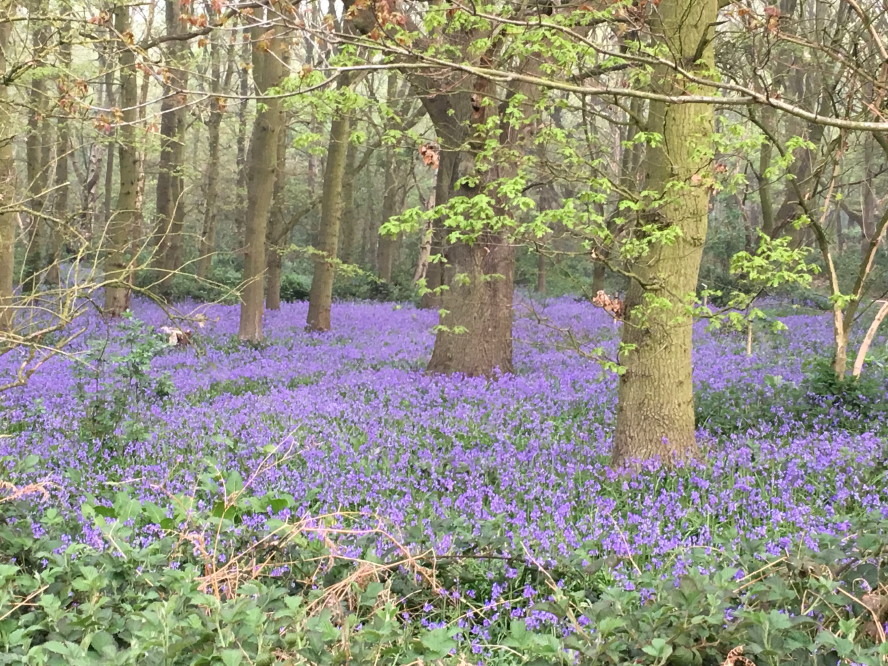
Between 2001 – 2004 the A63 Selby bypass, 10km twin lane single carriageway was constructed which severed the South West corner of the Barff, adjacent to Selby Golf Course and resulted in a slight redesign of several holes on the golf course. Wooden fencing was erected as a result of this new road running alongside of the Barff and a footbridge constructed over the ‘new road’ following the line of the Bridal way which extends from Mill Lane. Around 2005/2006 a definite 2metre wide limestone aggregate footpath was laid forming a circular path around the outer edges of the woodland. This footpath is approximately 1.2 miles in length and takes about 30 minutes to circumnavigate at a leisurely pace.
In 2012 the Barff was declared an Ancient Oak Woodland and as such throughout 2012 and 2013 significant work had been carried out by the relevant agencies to cut and remove large swathes of non-native trees, creating at that time huge scars on the landscape. Some three years later the planting of the native trees have become well established and are flourishing. Ongoing maintenance work on the footpath around the bottom of the Barff was completed during the Summer of 2016.
A second phase of woodland maintenance commenced during the Autumn of 2019 with the removal of many old and diseased trees and the cutting back of the Gorse and Broom bushes, especially adjacent to the ‘bypass trail’, this work continued through till March 2020 with re planting continuing into April 2020.
Brayton Barff is a popular site for walkers and bird watchers alike and a path circling the outer perimeter of the Barff makes a pleasant thirty minute walk, giving views looking over towards Selby and the village of Brayton as well as the power stations of Drax and Eggborough..jpg)
For the early risers it is a great place to see some stunning sunrises over the villages of Brayton looking towards Drax Power Station, the same with the Sunsets looking over towards Eggborough and Monk Fryston.
The Barff changes with the Seasons and every visit can reveal something new, the woodland is a haven for wildlife. Records show that since 1982 one hundred and twelve species of bird have been seen in the woodland and at least 40 of those have bred here, including Tawny Owl, Buzzard, Green Woodpecker, Spotted Flycatcher, Goldcrest and Nuthatch to name just a few. On average over 70 species of bird are recorded each year. Further details of the bird life on the Barff can be found on the Brayton Barff Group Facebook page, especially the posts from Derek Cooper. Today ‘The Friends of Brayton Barff group’ led by Derek and a small team of volunteers help keep and maintain the cleanliness of the site as well as recording the wildlife and bird sightings.
The Barff is also home to fifteen different species of mammals, including Muntjac Deer, Pipistrelle Bat, Fox, and Field Vole.
Over eighty species of plant and wildflowers have been recorded, included Bee Orchid, Northern Marsh Orchid, Wood Anemone, Marsh Ragwort, Bluebell, White Bluebell, Bittersweet and Purple and White Foxgloves. Over twenty species of Butterfly have been recorded, including Marbled White, Brown Angus, Speckled Wood, Comma and Brimstone.
During the Autumnal months fungi thrives in this woodland environment, species including Fly Agaric, Beefsteak Tree Fungi, Chicken of the Wood, Sulphur Tufts, Stinkhorn, Ink cap, Puffballs and Hoof Bracket are just some of the many varieties that can be found here.
Click on the galleries shown below to expand the albums.
May 2025
The High pressure has remained with us for the first week of May. Our morning walks have been dry, bright, and sunny, albeit tempered with a bitterly cold north wind which kept the temperatures down in single figures. Although the Bluebells are still in flower around the woodland many large areas are being smothered with ferns and nettles. Herb Robert continues to flower, its dainty pink flowers can be seen on the edges of the perimeter footpath, Cow Parsley is flowering apace and is currently five to six feet in height in places, Garlic Mustard continues to flower, Hawthorn and Rowan trees are in full flower and Elderberry and Holly are just beginning to come into flower. Creeping Buttercups are thriving and just starting to come into flower. Foxgloves have started to grow and are currently standing at around twelve inches in height.
Birdsong is still vibrant, Song Thrush and Mistle Thrush are still very vocal around the Barff, accompanied with Blackcap, Garden Warblers, Wren, Robin, Chiffchaff and Blackbird to name just a few, juvenile Robins seem to be aplenty and keep landing on the grass just in front of Meg and Gracie much to their annoyance.
Halfway through the month and the weather remains much the same on the Barff as the previous four weeks, dry, bright, and sunny mornings, though we have had a couple of grey and cloudy mornings with cold northerly breeze which has kept the morning temperature down in single figures but by mid-afternoon the sun has managed to break through the cloud and the remainder of the day has been warm and sunny with the temperatures reaching between 20c – 24c. The ground is getting exceptionally dry in places and cracks are beginning to appear, much of the grass on the meadow, heathland is fading and turning yellow due to the lack of rain, though will soon bounce back after some rain. No early morning frosts yet so far in May. Several more fields have been ploughed over either side of the old pump house and planted up this week. Good to see the potatoes growing nicely in one of the fields adjoining the woodland. YW have started initial preliminary testing the viability of a new borehole at the beginning of the week around the small pump house adjacent to the car park which resulted in some limited parking in the car park for a couple of days. No sign of any construction work yet on the top meadow, and the rabbits are making the most of it, they can be seen most mornings playing on the fringes of the huge bramble patch. Birdsong has continued and never fails to lift the spirits in the mornings, Blackbird, Chaffinch, Blue Tit, Black Cap, Wood Pigeon, Garden and Willow Warblers and Long Tailed Tits are regular soloists along with Song and Mistle Thrush and the delicate tones of the Goldcrest. The Buzzard is still active around the woodland although it is getting harder to spot it due to the leaf growth but can still be heard with its unmistakable call. It is lovely to see new life appearing amongst the trees, juvenile Robins have been showing for several weeks now especially along the perimeter footpath, Blue Tits and Great Tits are busily feeding their youngsters and can be seen flitting in and out of many of the bird boxes around the Barff.
Hawthorn, Rowan, and Elderberry bushes are in full flower, and growing at an alarming rate, Cow Parsley which lines the perimeter footpath is currently between 5ft – 6ft in height and in full flower, ferns are well over waist height and have smothered the Bluebells. Giant Burdock is living up to its name, clumps of it are growing alongside the perimeter footpath, its leaves well over a foot in length and still growing. Creeping Buttercup are in flower and flourishing everywhere.
The dry, bright, and sunny weather continued for a third week, although we have not had any frosts, the morning temperatures have fluctuated between 4c to 10c, though we have had several northerly winds which have kept the morning temperatures down. Due to the lack of rain this month many of the farmers have started to water their fields adjoining the woodland with water from their respective bore holes, huge plumes of water arch across the fields. The weather forecasters are now predicting the driest Spring since records began. Ferns are unfolding at an alarming rate and covering large parts of the woodland. Hogweed is shooting up alongside the flowering Cow Parsley, Creeping buttercup is living up to its name and is coming into flower. Blackcap, Wren, Dunnock, and Chiffchaff are providing a cacophony of birdsong, accompanied with the steady cooing of the Wood Pigeons, and Robins. The Yellowhammer has been quite vocal too along with the Blackcap. I have not seen a great deal of activity from the Grey Squirrels.
The yellow fields of Oilseed rape have all but lost their colour as the florets turn to seed. Yorkshire fog grass and the wild grasses are shooting up around the woodland.
As the month draws to a close what a contrast to the start of the month, we have seen rain most days during the last week of May and more so during the early hours of the morning. It was long overdue and welcomed by all, it has certainly transformed the woodland. The Bluebells have now died back being smothered by the Nettles and Ferns, Foxgloves are now flowering as is the Hogweed, Creeping Buttercup, Dogwood and Cow Parsley which are still in flower around the main perimeter footpath. Marsh Orchids have started to flower, I have not managed to find any Bee Orchids yet, but there is still plenty of time, Ragged Robin is just beginning to show, as are tiny little Acorns on the Oak trees. Pockets of Oxeye Daisies add some colour along the bypass trail as does the red and white flowering Campion and the flowering Clover. Yorkshire Water contractors have now erected temporary fencing around the top meadow and have started to do some piling work within that area. Birdsong has remained constant although slightly muffled during the wet mornings Blackcap, Wren, Blue Tit, Chiffchaff, Robin, Chaffinch, and Wood Pigeon are all very audible on our morning walks as are The Long-Tailed Tits, Garden Warbler, Willow Warbler and Goldcrest, once or twice the Yellowhammer has been chirping away too. Most of the Greater Spotted Woodpecker chicks look to have fledged their nest, though are still stopping close to their parents for the time being, and some parent birds look to be sitting on a second brood, I have just heard a pair of Nuthatches calling this morning which was good to hear, I have not heard them for a while.
Looking across to the fields adjoining the woodland, which had been freshly ploughed and furrowed at the beginning of May, today (at the end of the month) the fields are looking healthy and crops growing at an alarming rate, especially the potato fields which have benefitted from all the rain we have had this past week. May overall has been a dry month, possibly one of the driest since records began. I wonder what June has in store for us?
|

